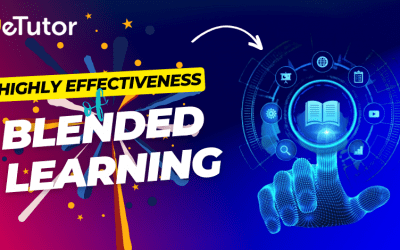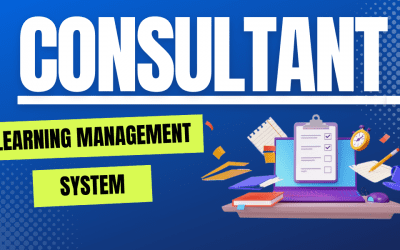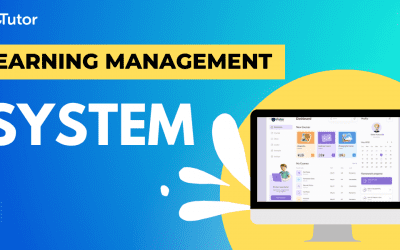Best Ways to Reduce Teacher Workload

Table of Contents
ToggleTable of contents
Introduction
What is the type of workload teachers are facing
HOW TO IDENTIFY THE WORKLOAD TEACHERS ARE FACING
How we can reduce teachers’ workload through SETU
Conclusion
Frequently Asked Questions
Introduction
Teaching can be a gratifying profession, but it can also be stressful. Teachers are often under pressure to meet deadlines, manage classroom behavior, and deliver effective teaching while addressing the individual needs of their students.
Schools could enhance learning outcomes by reducing teacher workload and fostering an environment that encourages and supports instructors and students. Effective time management techniques, teamwork, and technologically enabled solutions that can improve teaching and learning while lowering administrative responsibilities are necessary to reduce teacher workload.
In this blog post, we will discuss the types of workload the teachers face, how to identify them, and how SETU helps reduce teachers’ workload.
WHAT IS THE TYPE OF WORKLOAD TEACHERS ARE FACING?
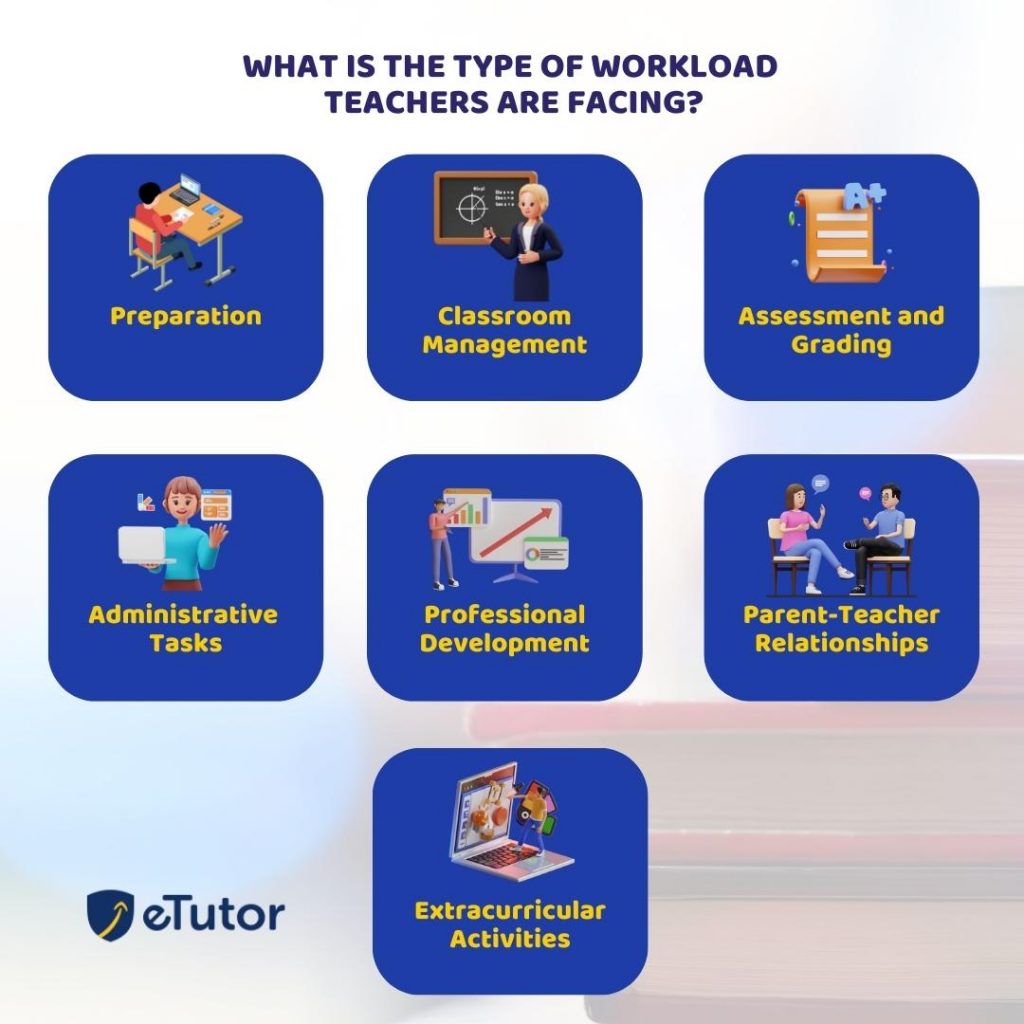
Teachers deal with various workload-related difficulties that can enhance stress and lead to burnout. The following are some typical workloads teachers deal with:
Preparation: It may be time-consuming and difficult for teachers to organize classes, develop teaching materials, and prepare for assessments.
Classroom management: It’s sometimes difficult and time-consuming to control student conduct while fostering a stimulating learning environment.
Assessment and grading: Instructors must evaluate student work, give feedback, and mark assignments. These tasks can take time and need careful consideration.
Administrative tasks: Teachers frequently handle time-consuming administrative tasks that interfere with class time, such as keeping records, checking attendance, and reporting.
Professional development: Teachers must continuously pursue new forms of instruction, technological advancements, and curriculum modifications.
Parent-teacher relationships: It might be time-consuming and difficult for teachers to interact with parents, provide frequent updates on student development, and respond to concerns or queries.
Extracurricular activities: A teacher’s workload may increase if they take part in extracurricular endeavors, including sports coaching, club advising, and field trips.
HOW TO IDENTIFY THE WORKLOAD TEACHERS ARE FACING?
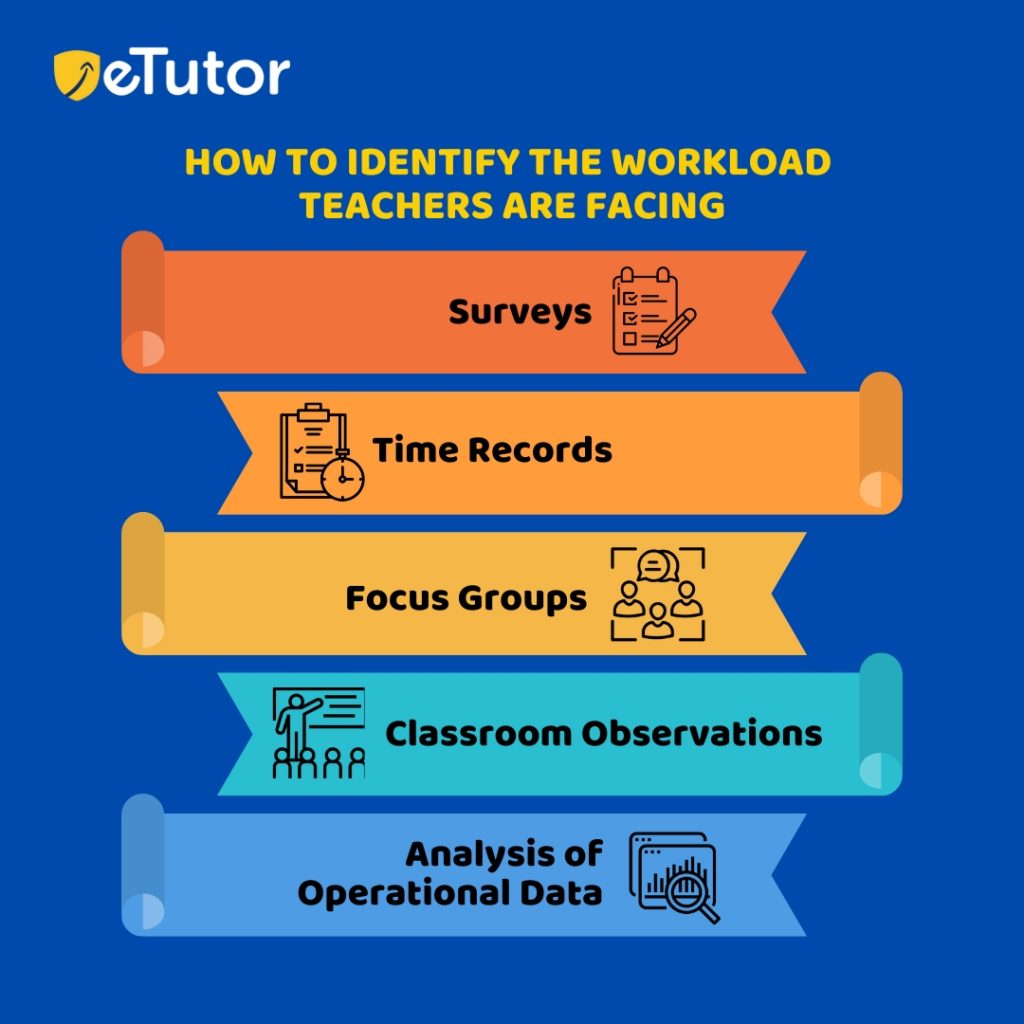
There are various methods for determining the workload that teachers are struggling with:
Surveys: Surveys could be created to learn how many hours teachers spend on different activities, including lesson planning, grading, and administrative work.
Time records: By tracking how much time teachers spend on various duties, time logs might reveal areas where they can be overwhelmed.
Focus groups: Focus groups could allow teachers to exchange experiences and discuss their difficulties managing their workload. It is especially helpful for pinpointing places where teachers require additional assistance or resources.
Classroom Observations: Watching teachers in the classroom could give you an understanding of the challenges of teaching and the burden they are dealing with. Data on class size, student needs, and instructional styles can be gathered via observations.
Analysis of Operational Data: To comprehend workload at a macro level, schools might study administrative data like the ratio of children to teachers or the amount of time teachers spend.
HOW CAN WE REDUCE TEACHERS’ WORKLOAD THROUGH SETU?
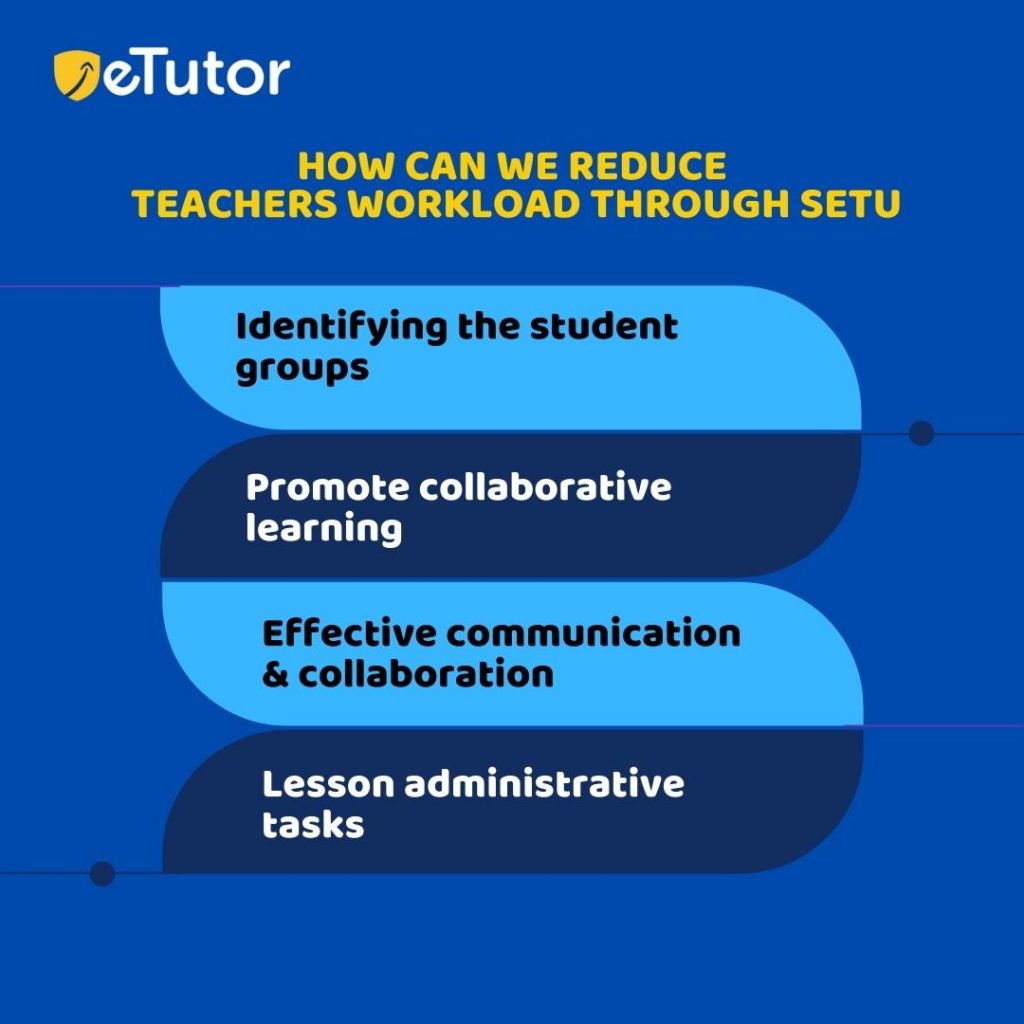
SETU, an AI-assisted platform, helps check the student’s preparedness for attending the class and analyzes the student’s performance. It assists teachers in reducing teacher workload in the following ways:
Identifying the student gaps: The feedback received through SETU could assist teachers in identifying student gap areas. Based on the gaps, teachers can enhance their teaching techniques or modify the course material to serve the requirements of the learners they teach successfully. It may result in more efficient teaching and improved learning outcomes, lessening the effort required to reteach content or deal with confused students.
Promote Collaborative Learning: SETU may be utilized to collect feedback on team activities and collaborative exercises, which can assist teachers in evaluating the success of these strategies and making the required adjustments. In addition to making marking individual assignments less time-consuming, collaborative learning could make learning for students more interesting and engaging.
Effective Communication and Collaboration: SETU can be used to collect feedback on how well students and educators communicate and collaborate. Doing so will make it easier to spot areas where engagement can be strengthened, and less work will be required to respond to each student’s particular concerns or queries.
Lessen Administrative Tasks: Teachers can find areas where administrative tasks can be streamlined and the workload affiliated with organizing course materials.
Conclusion:
Reducing teacher workload is essential to ensure teachers have the time and energy to effectively focus on teaching and supporting their students. Using various tools and strategies, educational institutions can create a more supportive and productive environment for teachers and students, ultimately leading to better learning outcomes for everyone involved.
Frequently Asked Questions
Author: Saritha Reddy
Website: https://www.etutor.co

